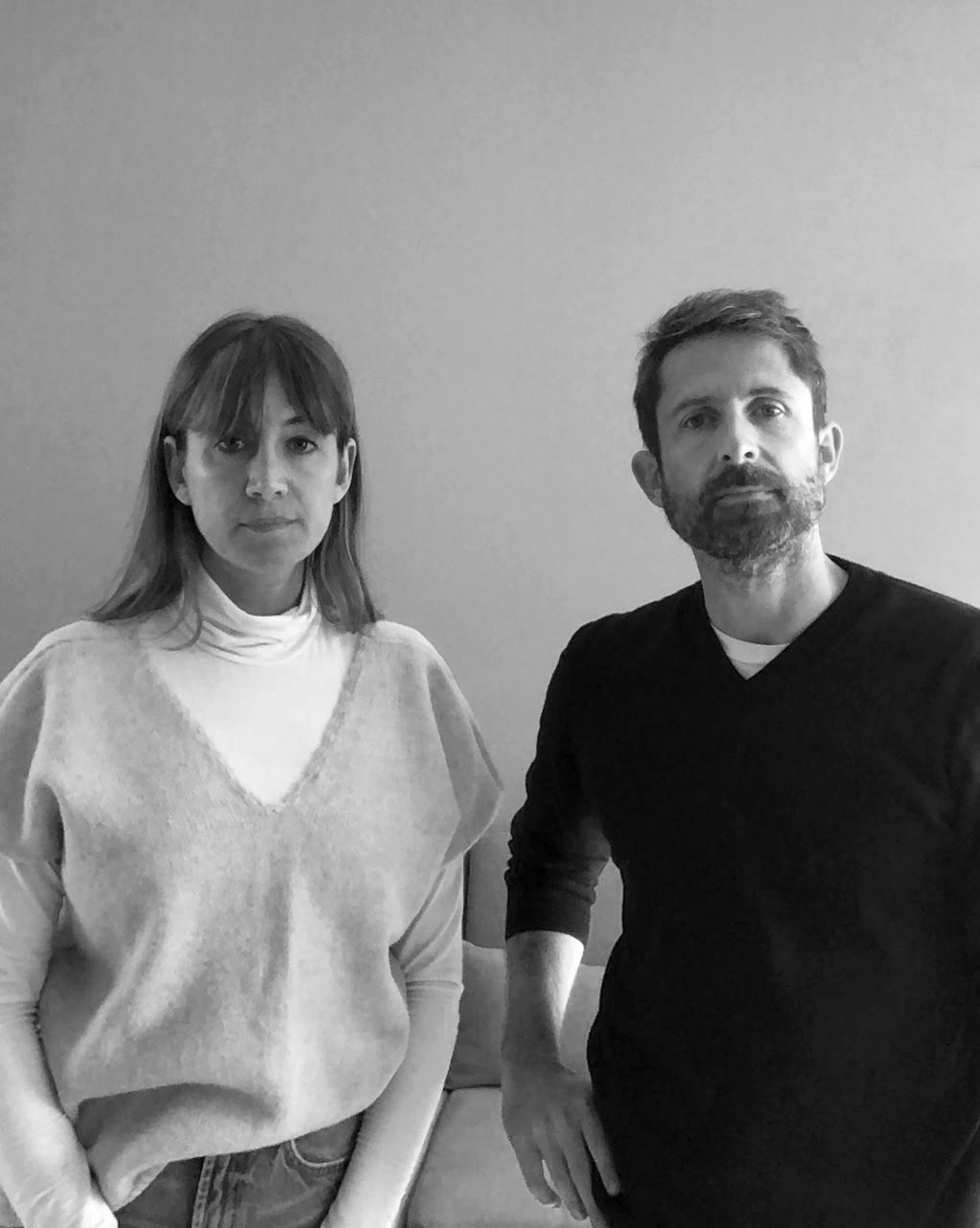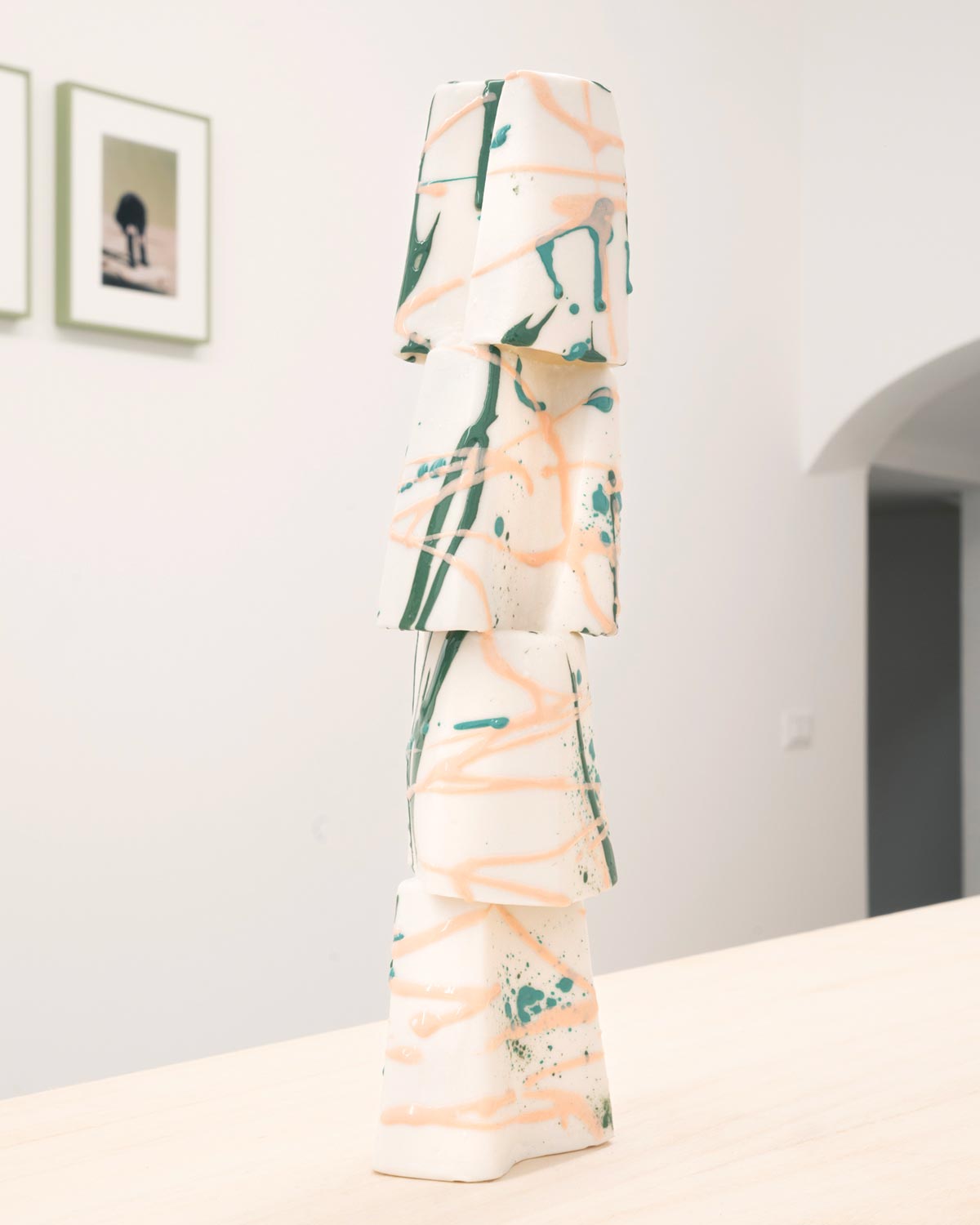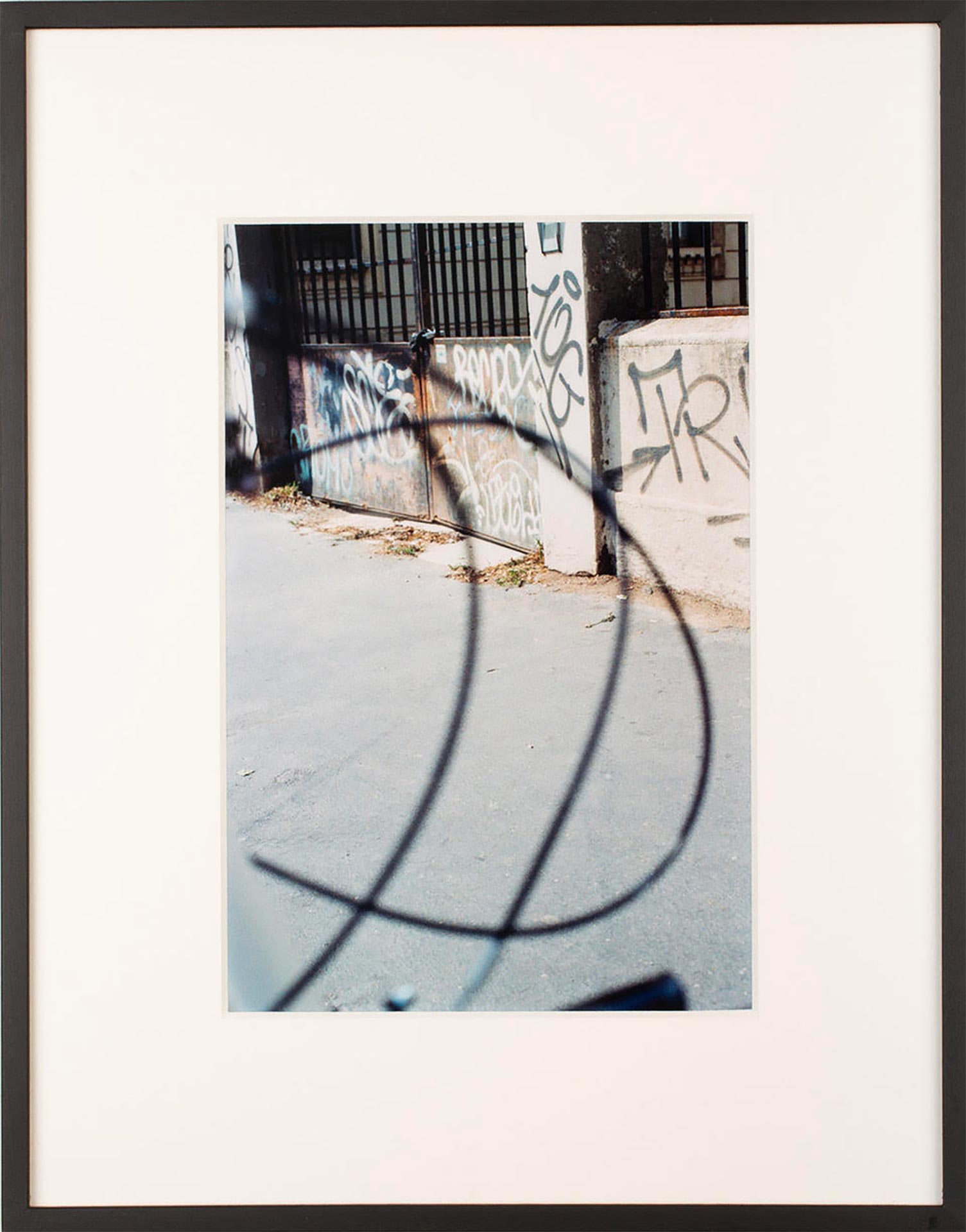
Via Spaventa
Federico Clavarino & Tami Izko
Visit by Appointment
Wednesday to Friday
10am–1pm
4pm–7pm
Saturday
10am–1pm
For two years, Tami Izko and Federico Clavarino walked a street called Via Spaventa to get from their home to their studio.
Via Spaventa is only one block long, lined on one side by industrial buildings and on the other by public housing from 1910. People leave broken furniture and random objects there, which are either picked up by others or carried away by the wind. It’s an uninviting street, but it’s the quickest way to reach their studio.
One morning, Tami and Federico found a cardboard box on the street and filled it with plaster. They made molds from it, and inspired by Federico's photographs of the street, Tami began working on a series of pieces reminiscent of the buildings on Via Spaventa. Using porcelain to reinterpret and reshape a place deeply ingrained in their daily routine, Tami created a series of sculptures, which she glazed to reflect the forms and colors found in the street’s graffiti. Federico used his camera in a similar process. The resulting work consists of twenty images and six sculptures.

Federico Clavarino & Tami Izko
Federico Clavarino, an Italo-British photographer, and Tami Izko, a Spanish-Bolivian sculptor, have been collaborating as a duo since 2018.
Individually, their work addresses historical narratives, migration memory, and identity. Together, they use photography and sculpture to explore themes like intimacy, coexistence, and belonging. Their first project, Eel Soup (2017), playfully examines their life together through a mix of images and objects. It was exhibited at Fotofestiwal, the Istanbul Biennale, Viasaterna Gallery, and Artissima, later becoming a book (Witty Books, 2022). Their second collaboration, Via Spaventa (2021), revisits the daily route they took from their home to their studio in Italy, reconstructing their experience through sculptures and images. This work debuted in Geneva in 2022. Their latest project, The Crab’s House (ongoing), continues this autobiographical exploration, incorporating installation to invite participation.
They’ve adopted a nomadic lifestyle, developing the project at different venues, including Stiftung Künstlerdorf, Ville Empain, and Art Futures.











